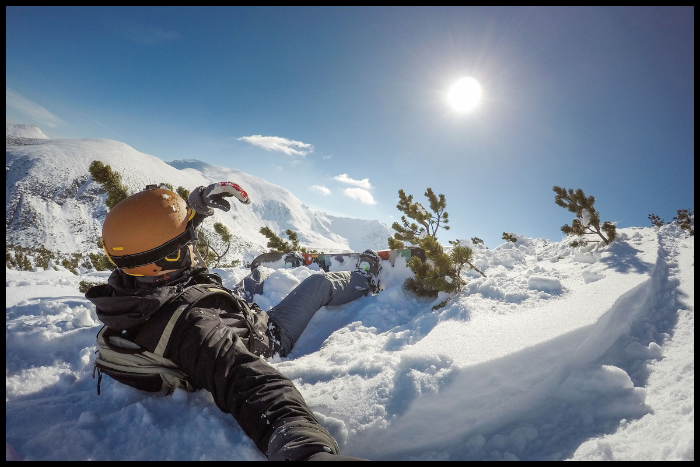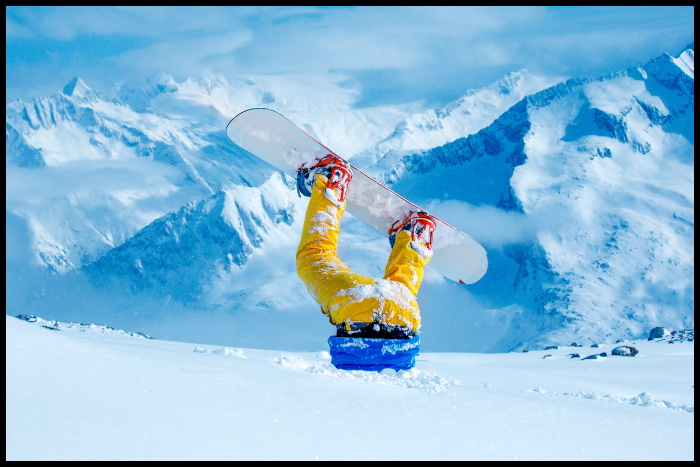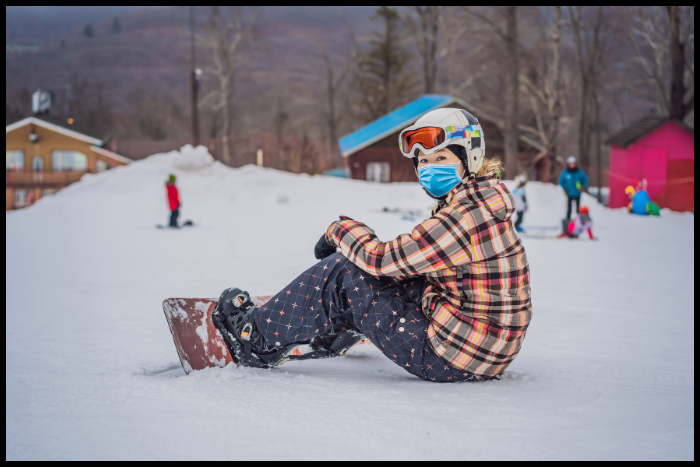Snowboarding is a sport commonly associated with freedom, exploration, and pushing boundaries. However, while all of this is certainly true, it’s a common misconception that it means you can snowboard pretty much anywhere you like if there’s snow and an incline.
There are a number of reasons it’s not possible to snowboard anywhere. Some spots have unsuitable terrain and hidden dangers, there may be poor snow coverage, some locations are environmentally protected, and some land may be private property. Also, a few resorts have outright banned snowboarding.
Below, we will cover some of the reasons it’s impossible to snowboard anywhere. Admittedly, some reasons are better than others, but they’re still important to be aware of. We’ll also cover what you need to be aware of when considering whether it’s possible to snowboard in a particular location.
Why You Can’t Snowboard Anywhere?
When it comes to snowboarding, the terrain is a crucial factor that determines where you can go. You’ll need enough snow coverage to ensure a safe and enjoyable experience.
Although it’s possible to snowboard on light snow, it’s not recommended as it can damage your board, cause injuries or lead to untraversable ground.
Additionally, if you find yourself in an area with insufficient incline, you may have to hike miles through treacherous conditions in extreme temperatures.
It’s important to note that deeper and steeper snow results in a more thrilling experience while providing a safer landing if you fall down.
1. The Dangers of Ungroomed Terrain
Ungroomed or unmanaged terrain is also more likely to hide dangerous hidden obstacles.
Hard rocks and sharp branches may be out of sight just below the snow’s surface but still at a shallow enough depth to pose a risk.
There’s also the danger of falling into a deep, covered crevasse or tree well, or you might get caught in an avalanche, all of which will likely result in death, especially if you’re riding without the proper safety equipment.
What’s more, if you find yourself in trouble, it’s unlikely there’ll be anyone around to come to the rescue, let alone help you get professional medical aid if required.

2. Ramifications of Snowboarding Outside Designated Areas
Aside from the significant risk to your safety, snowboarding has other ramifications outside specially designated areas.
For example, if you trespass on private property or government-protected land, you could open yourself up to prosecution for breaking the law, resulting in steep fines or even jail time.
Some areas might also be protected for ecological reasons, so snowboarding through them can damage ongoing efforts to protect the environment or local flora and fauna.
Environmental issues are already reducing the amount of snowboard-suitable terrain across the planet, so the last thing we want is to exacerbate the issue.
Where is Snowboarding Prohibited?
Back in the 1980s, snowboarding was pretty much banned across the whole of North America.
Resorts claimed it was due to insurance liability and that snowboarders were generally rude and dangerous on the slopes.
The second reason is more telling, as the truth is that snowboarding was seen as countercultural, something done by “those darned kids.”
So snowboarders were forced to hike up the slopes and ride at night or in the backcountry.
Fortunately, by the 1990s, resorts began lifting the ban on snowboarders; after the sport premiered at the 1998 Olympics, the future of legal snowboarding became secure.
1. Resorts Where Snowboarding is Banned in the United States
Interestingly, there are still three holdout resorts in the United States.
Alta and Deer Valley, both in Utah, still have “skiers only” policies, with the former saying its runs and lifts are designed with skiers in mind and not safe for snowboarders and the latter claiming they’re preserving the skiing tradition in a controlled environment.
Mad River Glen in Vermont also has a “no snowboarding” policy. Interestingly, it did originally allow snowboarders in as far back as 1985.
According to the resort, snowboarders were causing damage to the main lift when disembarking–not through malice but due to the design of the lift.
After the owner, Betsy Pratt was confronted by a group of disgruntled teen snowboarders who compared the policy to racial segregation, she decided to ban the sport outright in 1991.
The shareholders voted to uphold the ban in 1995, and the issue has never been voted on since, so there’s little chance of it ever being overturned.

2. Restrictions Outside of the United States
The rest of the world is far more relaxed when it comes to welcoming snowboarders.
The only resort restrictions outside of the US are national park areas that ban snowboarding to protect ongoing conservation efforts.
Some resorts, like Banff in Alberta, Canada, are within national parks, so the ban only applies to certain protected areas.
Restrictions also apply to private land in most cases unless you have the owner’s express permission.
Responsible Snowboarding
Just because you can legally snowboard somewhere doesn’t necessarily mean you should.
Snowboarders have worked hard to legitimize their sport since the days of blanket bans, so aside from the risk of physical injury or legal prosecution.
Irresponsible snowboarding practices can have detrimental effects on the natural environment.
Riding in unauthorized areas or disregarding designated trails can lead to soil erosion, vegetation damage, and disruption of wildlife habitats.
The delicate balance of alpine ecosystems, already under threat due to climate change, is further compromised when snowboarders venture into protected or sensitive areas.
Benefits of Snowboarding in Controlled Areas
Risks and hazards aside, snowboarding in controlled areas has plenty of benefits. If something goes wrong, you have access to emergency services like the ski patrol or local medical center.
You can also guarantee the slopes will be well maintained and clearly marked, with out-of-bounds areas listed, so there’s a low chance you’ll end up in a sticky situation thanks to dangerous terrain.
There’ll also be a record of your movements thanks to your ski pass, so if you get in trouble, the safety staff should be able to retrace your movements to some extent, making it easier to come to your aid.
On the subject of ski lifts, remember that the snowboarders of the 80s may have been exploring new terrain, but they were also having to hike up on foot with all their gear.
If you’ve ever had to wade through deep snow, you know just how exhausting it can be, and you’re less likely to enjoy your run if you get to the top of the hill and you’re already completely wiped out.
Even if you’re riding in a legitimate resort, reviewing the ski area in advance is still a great idea to ensure you’re familiar with the resort’s layout.
You’ll be able to plan your day around the best runs, create contingency plans in advance, and even figure out where you can find assistance in a pinch if something goes awry.
Responsible snowboarding protects the areas we ride, guarantees the safety of everyone on the slopes, and ensures the future of our favorite pastime.

Conclusion
While it’s impossible to snowboard anywhere, there are countless places you can all across the world.
It doesn’t matter whether you’re a first-timer looking for a place to practice or a seasoned professional hunting down the gnarliest lines out in the backcountry.
It’s certainly true that snowboarding is a sport that involves pushing boundaries, but fortunately, it’s no longer required to put the well-being of yourself, other snowboarders, or the environment at risk while doing so.
